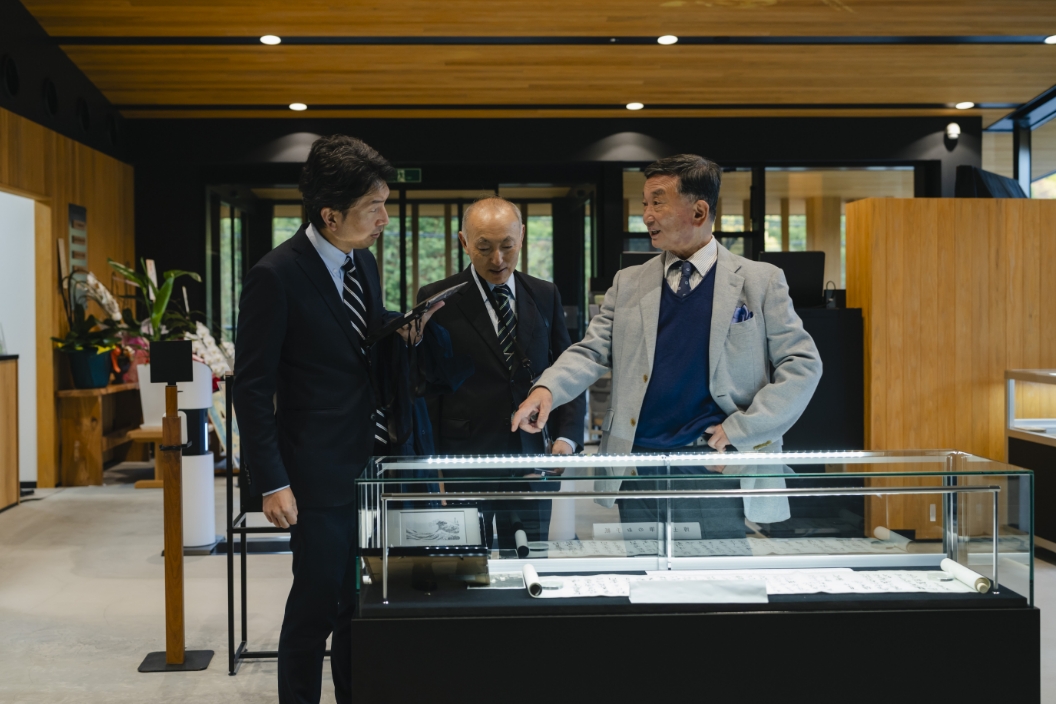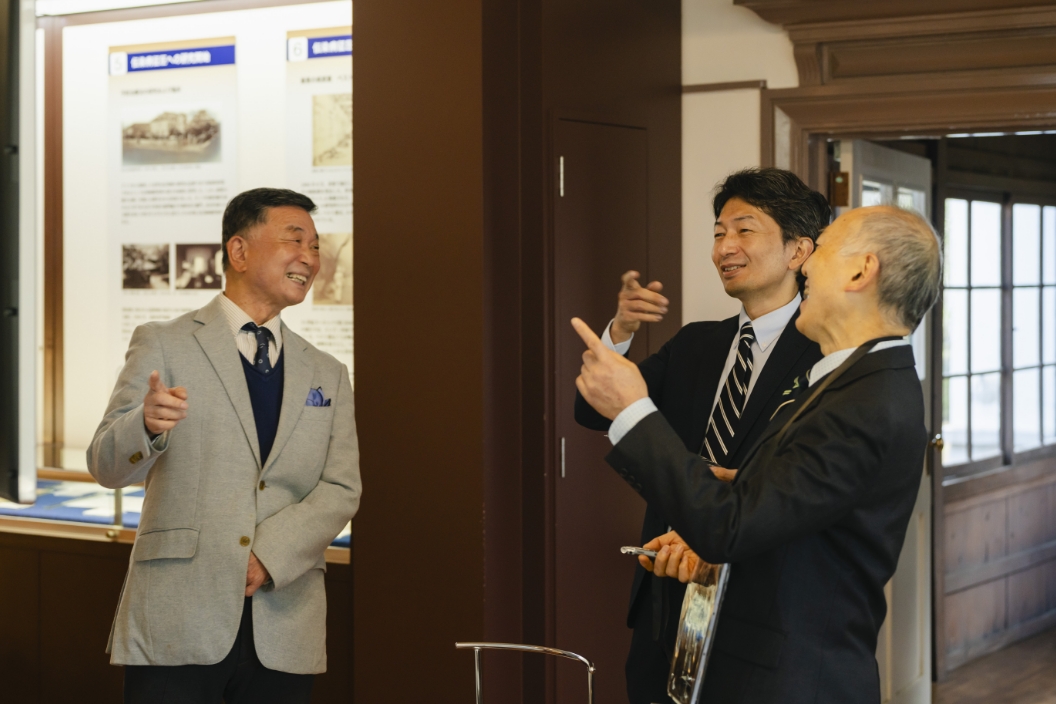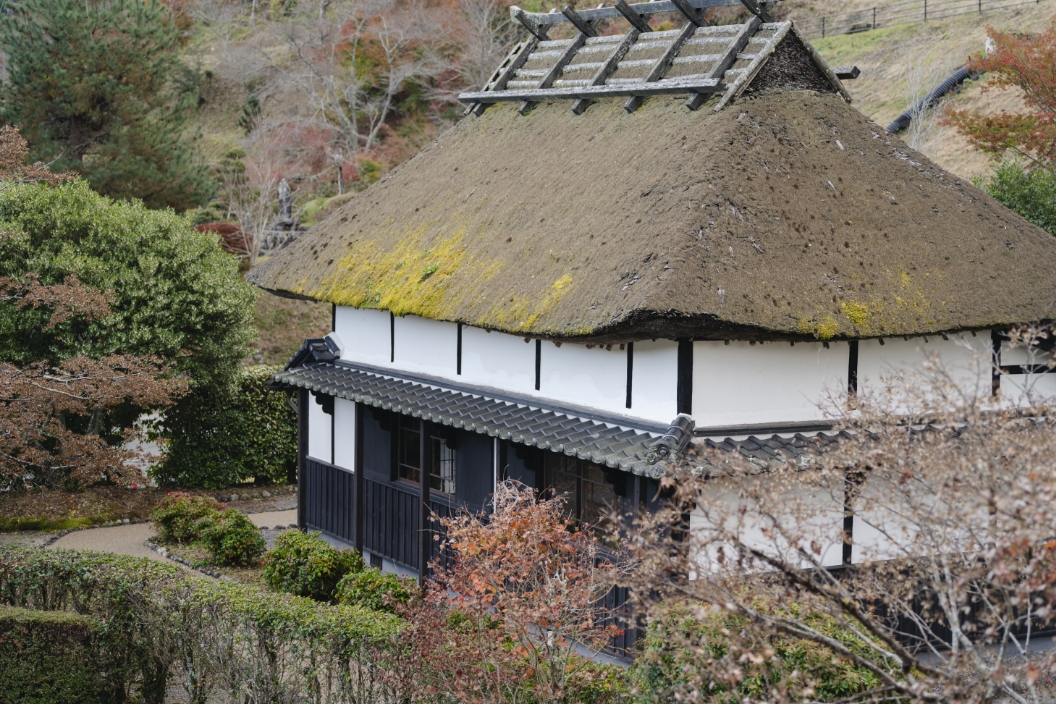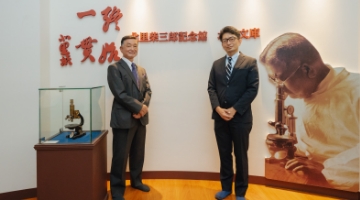CROSS TALK
Attitudes Toward Serum Therapy Research and Ideal Human Resource Development: Be passionate and be sincere
Akihiko YamamotoToru Hifumi
Hidero Kitasato
The Shibasaburo Kitazato Museum in Aso-gun, Kumamoto. The museum exhibits a number of documents that celebrate the achievements of Dr. Shibasaburo Kitazato, who pioneered serum therapy and is known as the “father of modern Japanese medicine.” This time, I visited it together with Dr. Akihiko Yamamoto of the National Institute of Infectious Diseases.
Dr. Hidero Kitasato, the museum director and Dr. Shibasaburo Kitazato’s great-grandson, gave us a guided tour. Dr. Hidero Kitasato is also serving as a Professor Emeritus at Kitasato University, specializing in microbiology. We spoke to him about Dr. Shibasaburo Kitazato’s work at the institute and his attitude toward research.
Lastly, we had a conversation with Dr. Kitazato about the human resources development efforts that should be passed on going forward.








